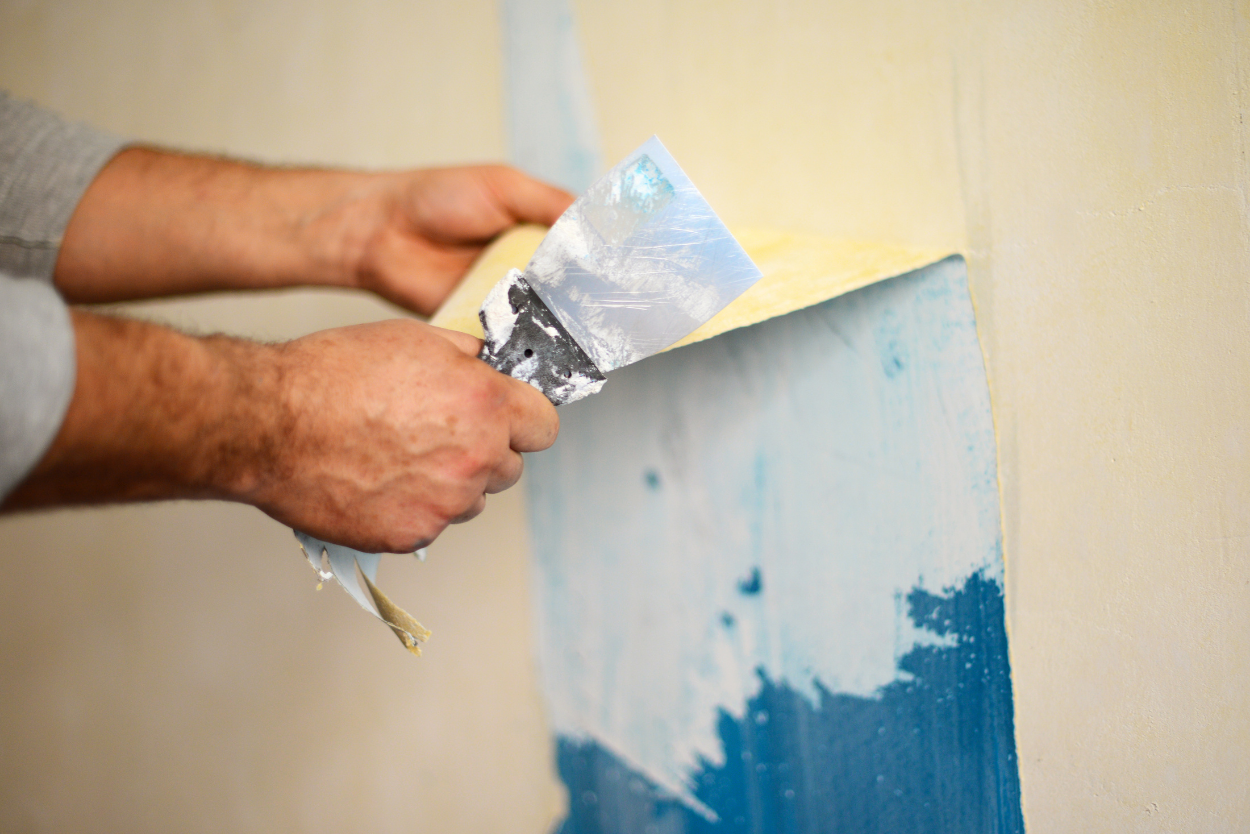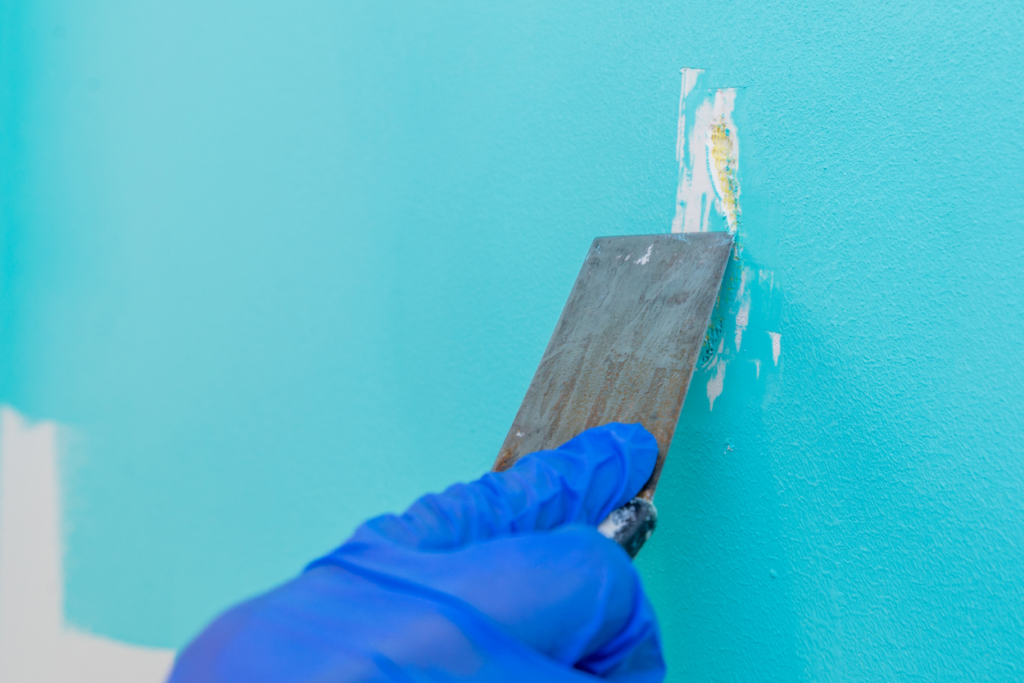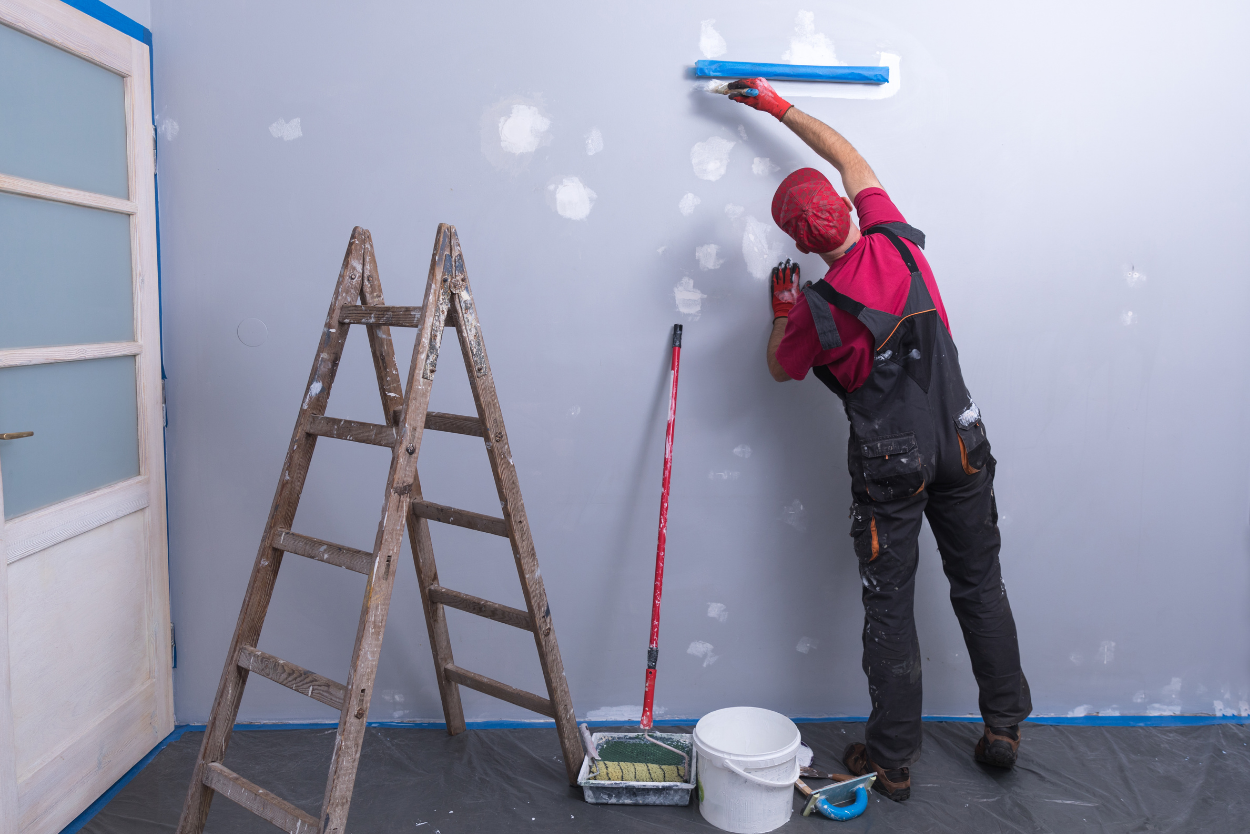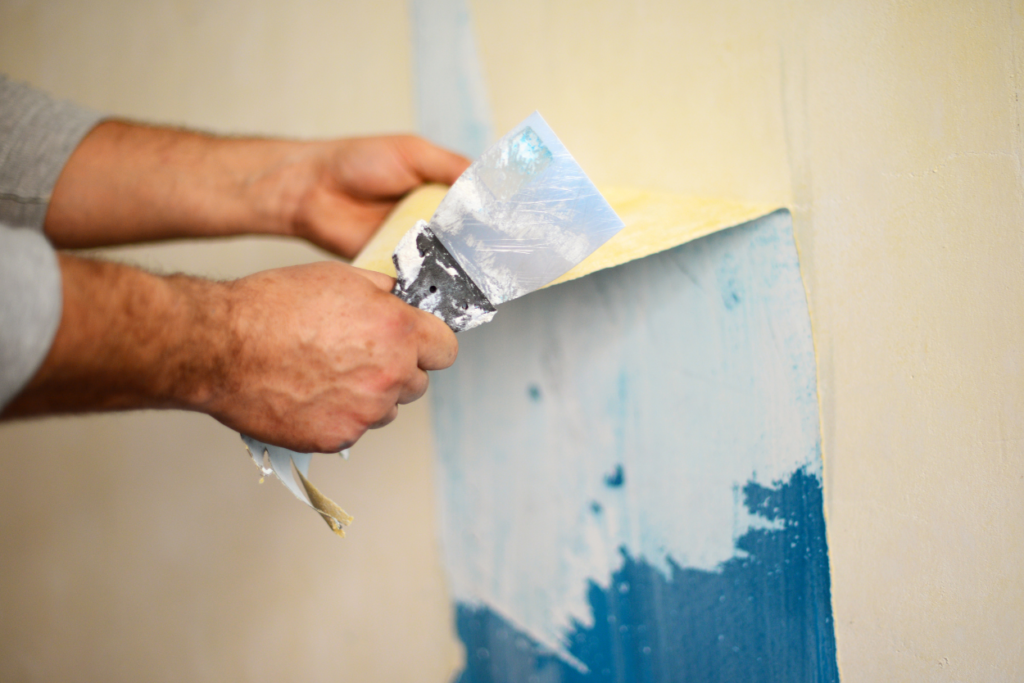Table of Contents
Key Takeaways
How to Remove Old Stains
1. Assess the Condition of the Deck
2. Prepare for the Refinishing Process
3. Clean the Deck Thoroughly
4. Strip the Old Stain
5. Sand the Deck Surface
6. Brighten the Deck
7. Clean and Dry the Deck Again
8. Apply the New Stain
Frequently Asked Questions
Trust the Experts in Deck Staining at Custom Colonial Painting!
| Key Takeaways ✔ Inspect the deck to identify any damage and understand the type of stain previously used. ✔ Gather all necessary tools and materials while ensuring safety measures are in place. ✔ Remove dirt, debris, and mildew to prepare the deck for the stripping process. ✔ Use a stain stripper to effectively remove the old stain, revealing the bare wood. ✔ Sand the deck to create a smooth, even surface for the new stain. ✔ Apply a brightener to neutralize chemicals and restore the wood’s natural color. ✔ Rinse and allow the deck to dry completely before applying the new stain. ✔ Choose the appropriate stain and apply it evenly for a durable, professional finish. |
With the price of deck repairs ranging from $700 to $3,100, and full replacements averaging around $11,000, it’s important to know how to refinish your deck properly to save money. By removing old stains and giving your deck a fresh finish, you can extend its life and maintain its beauty without the significant expense of replacement. To help you, here’s a step-by-step guide crafted by professional painting contractors in Westport, CT, to walk you through the process.

How to Remove Old Stains
1. Assess the Condition of the Deck
Before the deck refinishing process, painting contractors emphasize the importance of thoroughly assessing the condition of the deck. This step is crucial to ensure that the refinishing efforts will be effective and long-lasting. Here’s what painting contractors recommend:
Inspect the Deck for Damage and Wear
Start by walking around the entire deck and carefully inspecting it for any signs of damage or excessive wear. Common issues to look for include:
- Cracks in the Wood: Cracks, especially large ones, can compromise the deck’s structural integrity and should be addressed before refinishing.
- Loose or Warped Boards: Identify any boards that are loose, warped, or splintered. These should be repaired or replaced.
- Nails and Screws: Check for any nails or screws that have popped up. Hammer them back down or replace them if necessary.
- Rot and Mold: Look for signs of rot or mold, especially in areas that tend to stay damp. These need to be treated or replaced to prevent further damage.
Determine the Type of Stain Previously Applied
Knowing what type of stain was previously applied to the deck is essential for selecting the right products and methods for refinishing. Painting contractors suggest the following steps:
- Water Test: Sprinkle a few drops of water on the deck. If the water beads up, it likely indicates that an oil-based stain was used. If the water absorbs into the wood quickly, a water-based stain was probably applied.
- Check for Fading or Peeling: If the stain is faded or peeling, it could indicate that the previous application was ineffective or that the wood has undergone natural weathering. Exposure to UV light causes photodegradation and photooxidation in the wood, breaking down lignin and leading to discoloration and deterioration, signaling that it’s time for a new type of stain.
- Consult Previous Records: If available, review any documentation or records from previous painting contractors or homeowners that might indicate the type and brand of stain used.
2. Prepare for the Refinishing Process
When it comes to deck refinishing, preparation is key. Painting contractors emphasize that a well-prepared deck ensures a smooth and lasting finish. Below are the essential steps that professional painting contractors follow to prepare for the refinishing process.
Gather Necessary Tools and Materials
Before beginning any refinishing project, painting contractors suggest making sure to gather all the required tools and materials. Having everything on hand not only saves time but also helps avoid interruptions during the process.
Take Safety Precautions
Painting contractors know that safety is paramount when working with chemicals and power tools. Ensuring proper safety measures not only protects the contractor but also prevents accidents that could delay the project.
- Wear Protective Gear: Gloves, safety glasses, and masks are essential to protect skin, eyes, and lungs from harsh chemicals and dust.
- Ensure Proper Ventilation: When working with stain strippers, cleaners, and stains, it’s crucial to work in a well-ventilated area to avoid inhaling toxic fumes.
- Protect Surrounding Areas: Use drop cloths and plastic sheets to cover plants, furniture, and other surfaces that could be damaged by chemicals or overspray.
3. Clean the Deck Thoroughly
Cleaning the deck is a critical step for a successful refinishing project. According to experienced painting contractors, thorough cleaning is essential to remove dirt, debris, and mildew, ensuring that the new stain adheres properly and lasts longer.
Remove Dirt, Debris, and Mildew
Over time, decks accumulate dirt, debris, and mildew, which can prevent new stains from penetrating the wood. Painting contractors stress the importance of starting with a clean surface.
- Clear the Deck Surface: Remove all furniture, planters, and other objects from the deck.
- Sweep the Deck: Use a broom to remove loose dirt and debris.
- Apply a Deck Cleaner: Use a deck cleaner specifically designed for wood surfaces. Painting contractors often recommend applying the cleaner with a pump sprayer for even coverage.
- Scrub the Deck: For stubborn stains and mildew, use a stiff-bristle brush to scrub the cleaner into the wood. Pay special attention to corners and crevices where dirt tends to accumulate.

4. Strip the Old Stain
One of the most crucial steps in deck refinishing is choosing the appropriate stain stripper. Painting contractors emphasize the importance of selecting a stripper that is compatible with the type of stain previously applied. Whether it’s oil-based or water-based, the right product will effectively break down the old stain without damaging the wood underneath.
Apply the Stain Stripper and Scrub the Deck
Once the appropriate stain stripper is selected, the next step is to apply it uniformly across the deck. Painting contractors recommend using a brush or roller to ensure even coverage. It’s essential to allow the stripper to sit for the manufacturer’s recommended time to penetrate the old stain effectively.
- Protect Surrounding Areas: Use plastic sheeting or drop cloths to protect plants, furniture, and other surfaces from the stripper.
- Apply Stain Stripper Generously: Use a paintbrush, roller, or sprayer to apply the stripper, ensuring it covers the entire surface evenly.
- Let it Sit: Allow the stripper to sit for the specified time, usually between 15-30 minutes, to soften the old stain.
- Scrub the Surface: Use a stiff-bristle brush or deck scrubber to remove the loosened stain. Apply pressure to lift the stain from the wood effectively.
Rinse the Deck Thoroughly
After scrubbing, it’s critical to rinse the deck thoroughly to remove all residue from the stripper and loosened stain. Painting contractors suggest using a garden hose with a high-pressure nozzle or a pressure washer set to a low setting. This ensures all traces of the stripper and old stain are washed away, preparing the surface for sanding.
- Work in Sections: Rinse the deck in small sections, working from one end to the other to ensure thorough removal of all residues.
- Check for Remaining Stain: Inspect the deck as you rinse, and if any stubborn spots remain, apply a second round of stripper or additional scrubbing.
- Allow Deck to Dry: Once rinsed, allow the deck to dry completely, typically for 24-48 hours, before moving on to the sanding process.
5. Sand the Deck Surface
Sanding the deck after stripping is an essential step that should not be overlooked. Painting contractors stress that sanding helps to remove any remaining stain, smooths out the wood surface, and opens up the wood grain to accept the new stain more effectively. It’s especially important for decks with rough or weathered surfaces, as sanding will restore the wood’s original smoothness.
Choose the Correct Grit Sandpaper
Selecting the right grit sandpaper is key to achieving the best results. Painting contractors typically recommend starting with a coarser grit to remove any residual stain and then moving to a finer grit to smooth the surface.
- Coarse Grit (60-80): Use this to remove any remaining stain and smooth out rough areas.
- Medium Grit (100-120): Follow up with this grit to refine the surface and prepare it for staining.
- Fine Grit (150-180): For a final pass, use a fine grit to achieve a smooth, polished finish, especially on handrails and other detailed areas.
Sand the Deck to Achieve a Smooth Finish
When sanding, it’s important to follow the grain of the wood to avoid scratches and ensure a uniform finish. Painting contractors suggest using a power sander for large areas and sanding blocks for detailed sections such as corners and railings.
- Sand Along the Grain: Always sand in the direction of the wood grain to prevent unsightly scratches.
- Use Consistent Pressure: Apply even pressure while sanding to ensure a uniform surface.
- Check for Smoothness: After sanding, run your hand over the surface to check for smoothness. Re-sand any rough spots if necessary.
- Clean Up Dust: After sanding, thoroughly clean the deck to remove all dust and debris before applying the new stain.
6. Brighten the Deck
After the old stain has been stripped and the deck sanded, the next crucial step is to neutralize any remaining chemicals and brighten the wood. Painting contractors emphasize this step because it ensures the deck is ready to receive the new stain, leading to a uniform and long-lasting finish.
Apply a Deck Brightener
Using a deck brightener is essential to restore the wood’s natural pH balance after applying the stain stripper. Painting contractors recommend selecting a high-quality deck brightener designed to bring out the natural color of the wood and prepare it for the next steps.
- Choose the Right Brightener: Ensure the product is compatible with the wood type and the stripper used.
- Apply Evenly: Use a brush, roller, or sprayer to apply the brightener evenly across the deck surface.
- Allow Time to Work: Let the brightener sit for the manufacturer’s recommended time, usually around 10-15 minutes.
- Rinse Thoroughly: After the brightener has done its job, rinse the deck thoroughly with clean water.
7. Clean and Dry the Deck Again
Painting contractors always recommend giving the deck a final cleaning and ensuring it’s completely dry before applying the new stain. This step is vital to achieving a professional finish.
Rinse the Deck Thoroughly After Brightening
After neutralizing and brightening the deck, a final rinse is necessary to remove any remaining chemicals and debris.
- Use Clean Water: Ensure the water used for rinsing is clean to avoid reintroducing contaminants.
- Rinse from Top to Bottom: Work systematically from the top of the deck to the bottom, ensuring all areas are thoroughly rinsed.
Allow the Deck to Dry Completely Before Staining
A dry deck is crucial for proper stain adhesion. Painting contractors insist on giving the deck ample time to dry, typically 24 to 48 hours, depending on the weather conditions.
- Check for Moisture: Use a moisture meter to ensure the wood is dry enough for staining.
- Monitor the Weather: Plan the staining process when there’s no rain expected, and the humidity is low to moderate.
8. Apply the New Stain
With the deck fully prepared, it’s time to apply the new stain. Painting contractors stress the importance of choosing the right stain and applying it correctly to ensure a durable and aesthetically pleasing finish.
Choose Between Oil-Based and Water-Based Stains
The choice between oil-based and water-based stains depends on the specific needs of the deck and the desired finish. Painting contractors can provide insights into which option might be best based on the deck’s exposure to the elements and the wood type.
| Type of Stain | Pros | Cons |
| Oil-Based Stains | Deep penetration, rich color, and durability. | Longer drying time and potential for more VOC emissions. |
| Water-Based Stains | Faster drying, easier cleanup, and lower VOC emissions. | May not penetrate as deeply as oil-based stains. |
Apply the Stain Using Professional Techniques
Proper application is key to achieving an even and long-lasting finish. Painting contractors suggest the following techniques:
- Start with the Rails and Edges: Begin by staining the rails and edges, then move to the larger deck surface.
- Work with the Grain: Always apply the stain in the direction of the wood grain to ensure smooth coverage.
- Use the Right Tools: Use a quality brush, roller, or sprayer suited to the type of stain being used.
- Apply in Thin Coats: Avoid applying too much stain at once; instead, use thin, even coats to prevent puddling and streaking.
Ensure Even Coverage and Avoid Streaks
To achieve a professional look, it’s essential to focus on even coverage and prevent streaks.
- Maintain a Wet Edge: Always keep a wet edge while staining to avoid lap marks.
- Blend Overlaps: Gently blend overlaps to ensure a uniform appearance across the deck.
- Check for Missed Spots: Once the first coat is dry, inspect the deck for any missed areas and touch up as needed.
Frequently Asked Questions
How often should I stain my deck?
The frequency of deck staining depends on the type of stain used and the local climate conditions. Generally, it’s recommended to stain your deck every two to three years. High-quality stains may last longer, while decks exposed to harsh weather conditions might need more frequent maintenance. It’s essential to check your deck annually for signs of wear, such as fading or water absorption, to determine if a new coat is necessary.
What is the best time of year to stain my deck?
The best time to stain your deck is during the late spring or early fall when temperatures are mild, typically between 50°F and 85°F. It’s important to avoid staining during extreme heat, cold, or high humidity, as these conditions can affect the stain’s ability to penetrate and dry properly. Also, ensure there’s no rain forecasted for at least 24-48 hours after staining to allow the stain to cure effectively. Staining during optimal weather conditions ensures a smooth application and long-lasting results.
How do I know if my deck is ready to be stained?
Your deck is ready to be stained if it is clean, dry, and free from previous coatings that could prevent the stain from adhering properly. To check if the wood is dry enough, sprinkle water on the surface; if it soaks in within a few minutes, the wood is ready for staining. Ensure there are no traces of old stain, paint, or dirt on the deck by thoroughly cleaning and sanding the surface. The wood should feel dry and smooth to the touch before applying the stain.
Can I stain my deck myself, or should I hire a professional?
Staining a deck can be a DIY project if you have the time, tools, and patience, but it requires careful preparation and attention to detail. A professional can ensure the job is done efficiently, with even coverage and proper application, which can be especially helpful for larger decks or if you’re inexperienced. Professionals also have access to high-quality stains and equipment that might not be available to the average homeowner. However, if you’re comfortable with DIY projects and follow the correct steps, staining your deck yourself can save money and be a rewarding experience. Consider your skill level and the scope of the project when deciding whether to do it yourself or hire a pro.
What are the common mistakes to avoid when staining a deck?
Common mistakes when staining a deck include failing to clean the deck properly, staining in poor weather conditions, and over-applying the stain. Skipping cleaning can result in poor stain adhesion, leading to peeling or uneven color. Staining during high humidity, rain, or extreme temperatures can affect drying and curing, causing a blotchy finish. Over-applying stain can lead to a sticky surface and extended drying time. To avoid these issues, follow proper preparation steps, choose the right weather window, and apply stain in thin, even coats for the best results.

Trust the Experts in Deck Staining at Custom Colonial Painting!
Custom Colonial Painting is your local expert for deck staining in Westport, CT. With years of experience, we specialize in protecting and enhancing your deck using top-tier materials and proven techniques. Our team is committed to delivering exceptional results that will keep your deck looking beautiful for years. Based in Westport, CT, we’re ready to handle all your deck staining needs.
Contact us today for a flawless finish!



